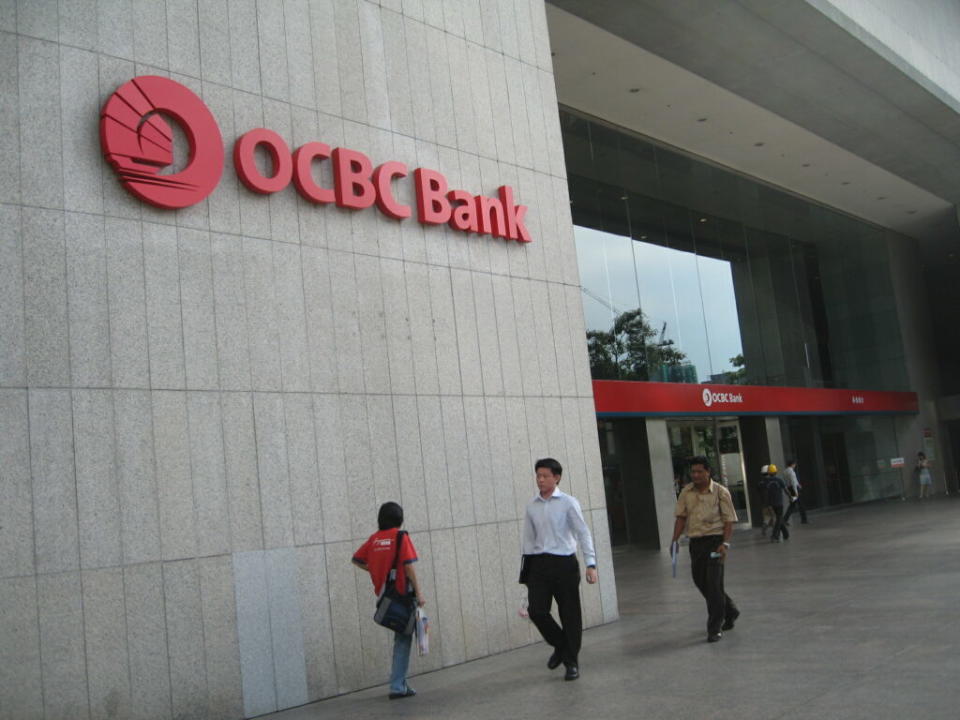OCBC Hikes its Final Dividend 43% Amid Record Profits: 5 Highlights from the Bank’s 2022 Results

The higher interest rate environment may be causing pain for more businesses, but it has been a boon for the three local banks.
Early last week, DBS Group (SGX: D05) reported a record set of earnings and also declared a special dividend of S$0.50.
Just yesterday, United Overseas Bank Ltd (SGX: U11), or UOB, also delivered a stunning set of results along with an increase in its final dividend.
OCBC Ltd (SGX: O39) has now followed suit.
Singapore’s second-largest bank has turned in a sterling report card for 2022 and also hiked its final dividend by 43% compared to a year ago.
Here are five highlights from the lender that investors should be interested in.
Higher operating and net profit
For 2022, OCBC’s net interest income (NII) surged by 31% year on year to S$7.7 billion.
The better performance was attributed to a sharp rise in the bank’s net interest margin (NIM) along with a year-on-year increase in its loan book.
Total income, however, improved by just 10% year on year to S$11.7 billion as non-interest income declined by 16% year on year.
The good news was the rise in operating expenses was kept at a slower rate of 5% year on year to S$5 billion.
The cost discipline, coupled with a rise in the share of profits from associates, caused operating profit (before allowance) for the lender to increase 15% year on year to S$7.6 billion.
With allowances falling by a third compared to a year ago, OCBC saw its net profit climb 18% year on year to a record high of S$5.7 billion for 2022.
Weaker non-interest income
The bank’s non-interest income clocked in at around S$4 billion, down 16% year on year.
The main culprits were lower net fee income and a net loss of S$206 million arising from the sale of investment securities, compared with a net profit of S$92 million in the prior year.
Net fee income stood at S$1.85 billion, a drop of 18% from a year ago, because of lower wealth management fees in line with volatile stock market conditions.
A bright spot was net trading income, which increased by 9% year on year to S$834 million, driven by higher treasury income along with hedging gains.
The profit from OCBC’s insurance unit, Great Eastern Holding (SGX: G07), dipped by 11% year on year to S$1.2 billion mainly from unrealised valuation losses arising from higher discount rates used to value insurance contract liabilities.
A surge in net interest margin coupled with loan growth
Like both UOB and DBS, OCBC also witnessed a sharp rise in its NIM for 2022.
OCBC’s NIM jumped from 1.54% in 2021 to 1.91% in 2022, pushing the lender’s NII above S$7 billion for the very first time.
On a quarterly basis, the rise in NIM is even more impressive, with every quarter in 2022 registering a quarter on quarter NIM increase.
The fourth quarter of 2022 saw NIM come in at 2.31%, although CEO Helen Wong guided for 2023’s NIM to hover around the 2.1% region.
OCBC’s loan book inched up 2% year on year to S$291.5 billion, helping to further boost the bank’s NII.
On the flip side, currency headwinds dented part of its loan growth, which could have been 4.5% year on year if currency effects were excluded.
Digital strength
OCBC’s digital transformation has been nothing short of amazing.
For its consumer and private banking divisions, up to 96% of financial transactions in Singapore were conducted digitally last year.
In the global wholesale banking division, 83% of small and medium enterprises (SMEs) in Singapore and Malaysia opened accounts digitally.
PayNow corporate transactions in Singapore soared by 79% year on year.
A sharp increase in dividends
OCBC’s stronger results justified higher dividends, which was exactly what the bank announced for 2022.
Its final dividend surged by 43% year on year from S$0.28 to S$0.40, bringing 2022’s total dividend to S$0.68.
2022’s total dividend was 28% higher than 2021’s dividend of S$0.53, demonstrating the bank’s willingness to reward shareholders.
This year’s dividend represents a 53% payout ratio, and OCBC has guided for a payout ratio of 50% moving forward.
Get Smart: A favourable outlook
Looking ahead, OCBC expects China’s reopening to boost the region’s economies.
It also expects interest rates to remain high as the US central bank tackles inflation with a vengeance.
The bank expects to chalk up mid-single-digit year on year loan growth but remains cautious about a potential recession that may dampen loan demand and increase bad debts.
If you’re looking to invest in 2023, our latest FREE report can guide you. It shows you how to find dividend stocks in SGX, and a nearly fool-proof way of building your portfolio. Many people love dividend investing, but few truly know how to profit from it consistently. Click the link here to download our new report and discover the secrets!
Follow us on Facebook and Telegram for the latest investing news and analyses!
Disclosure: Royston Yang owns shares of DBS Group.
The post <strong>OCBC Hikes its Final Dividend 43% Amid Record Profits: 5 Highlights from the Bank’s 2022 Results</strong> appeared first on The Smart Investor.

 Yahoo Finance
Yahoo Finance 